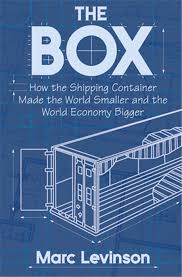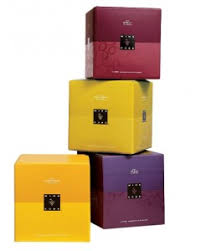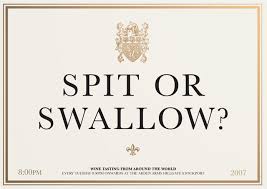
It is impossible to drive through the Alentejo region of Portugal without seeing the dark trees that dot the landscape. Pretty soon you notice the lines on the trunks where the bark has been harvested and then you know for sure that you are in a cork oak (Quercus suber) forest, the densest concentration of these trees in the world (see map above).
Cork’s Medieval Roots
Planting a cork oak tree is a statement of faith in the future. The first harvest must wait for 15 years and then the cork will be of low quality, unsuitable for natural cork closures. The second and better harvest that yields more usable cork comes 9 years later. Only 9 years after that (and every 9 years into the future) can the highest quality cork be taken. Few other things in the world of wine (producing 40-year old Tawny Port, for example) can compare to cork in terms of optimistic forward thinking.
Sue and I visited both Porto and Alentejo during our recent trip to Portugal and Antonio Amorim and Carlos de Jesus of Corticeira Amorim, the world leader in cork closures, invited us to visit their factories in these two regions to see first-hand what I am calling the Three Ages of cork.
Cork is an ancient product — the Greeks, Egyptians and Romans all sealed their wine jars with cork. The harvesting of it is laborious hand work since each tree has its own configuration. Photos of modern cork harvests could easily be mistaken for medieval paintings.
Industrial Revolution
Stepping into the Amorim factory in Coruche, you get an initial sense of moving forward in time to the industrial revolution. There is still a lot of hand work here. Sorting the processed cork bark pieces, for example, still requires human judgement as they are inspected and graded for quality one at a time. The key to making a profit in cork is to waste nothing, so each cork piece must go to its best use and the waste at each step recycled into a lower-priced product.
Almost nothing is thrown away. One item that was headed for the power-supplying waste burner was a piece of cork that was badly infected with TCA, the source of cork taint. What a horrible smell! Until a machine can consistently detect all the potential problems with cork including TCA, cracking, insect damage and so on, these workers’ jobs are very secure.
The factory was loud with the clamber of industrial machinery as every task that could be mechanized was mechanized. It gave me a sense of what those 19th century British textile mills must have been like.
Interestingly, the finest corks closures made from the best quality raw material are hand-punched by skilled craftsmen (see photo above). These corks need to be as close to perfect as possible and so far nothing can replace the human eye for seeing just where the cork’s sweet spot is (and what parts should be recycled down the line for other products).
NDtech: Cork for the 21st Century
It would be easy to think of cork just this way — a medieval product made using industrial revolution technology — but this viewpoint misses a lot as we learned when we visited Amorim’s second factory near Porto.
Here we saw many of the same processes as in the south, but the focus was different because Carlos and Antonio wanted us to see the progress that has been made at improving cork closures and addressing the issues that allowed synthetic stoppers and screw cap technology to make dramatic inroads in this market.
Innovative new production processes and seriously obsessive attention to detail have now all but eliminated the incidence of detectable TCA contamination in Amorim corks throughout the product line, which is a big deal and came only after intense and expensive research and process innovation. But that was not good enough and so earlier this year Amorim unveiled its latest innovation, NDtech corks.
Amorim scientists guided us into the controlled environment that you see in the video above and we saw the NDtech (think non-detectible TCA levels) process at work. ndTech really does individually-inspect each and every cork that goes through the process and guarantees then all to be TCA-free at human sensory threshold levels.
Amorim is convinced that the process works and we saw persuasive data about these and other Amorim cork closures. Now the challenge is to scale up to meet the demand for these, the very best corks that can be made.
Three Ages in One Product
I find it interesting that cork is so many things at once. It is a natural product, of course, but one that is necessarily harvested and then processed by hand and manufactured using machines and processes from a variety of periods. It is also increasingly a technological product.
Making excellent cork closures is complicated as we saw at the Amorim factories and doing so profitably is even more complicated. We were impressed with the way that every scrap and bit of cork is put to use in closures and other cork products and every ounce of value realized. Environmental and economic sustainability go hand-in-hand.
Meeting the challenge of synthetic and screw-cap closures has not been easy for cork producers, who saw a some of their market share disappear. Hard work, expensive research and technical innovation has turned this around, however, and now many consumers and wineries who moved away from cork in the past are taking a new look.
Someone once accused the economist John Maynard Keynes of expressing a view that was inconsistent with his previous statements.” When the facts change,” Keynes replied, “I change my opinion. What do you do?” The facts about cork — especially the TCA situation — have changed in the past few years. No wonder many people in the industry have revised their views on cork.
>><<<
Many thanks to Antonio Amorim and Carlos de Jesus for he opportunity to see the three ages of cork with our own eyes and learn about the scientific progress from the experts. This concludes the short series of past-present-future stories from the Alentejo. Come back next week for a look at some unexpected wine tourism opportunities we found in Portugal.
 At the end of my review of
At the end of my review of


 One of my favorite globalization books is
One of my favorite globalization books is  Bladders are so good at the particular thing that they do that they have become an industry standard technology for bulk imported wines, which are shipped in
Bladders are so good at the particular thing that they do that they have become an industry standard technology for bulk imported wines, which are shipped in 
 “We will sell no wine before its time.” That was the slogan of a famous Paul Masson winery advertising campaign. (See note at the end of this post.) But a lot of wine is sold before it has reached its peak.
“We will sell no wine before its time.” That was the slogan of a famous Paul Masson winery advertising campaign. (See note at the end of this post.) But a lot of wine is sold before it has reached its peak.

 Jean-Charles Boisset argues that using traditional glass containers with cork closures makes little sense — either environmentally or economically — for most of the wine sold today. He observes that at least 70 percent of wine retails for $12-$10 or less (probably much more than 70 percent, I suspect) and 70 percent is consumed within three hours of purchase. Finally, 70 percent of the production cost of these low price wines is in the packaging, not the wine itself.
Jean-Charles Boisset argues that using traditional glass containers with cork closures makes little sense — either environmentally or economically — for most of the wine sold today. He observes that at least 70 percent of wine retails for $12-$10 or less (probably much more than 70 percent, I suspect) and 70 percent is consumed within three hours of purchase. Finally, 70 percent of the production cost of these low price wines is in the packaging, not the wine itself. bottles and the corks that seal them?
bottles and the corks that seal them?

